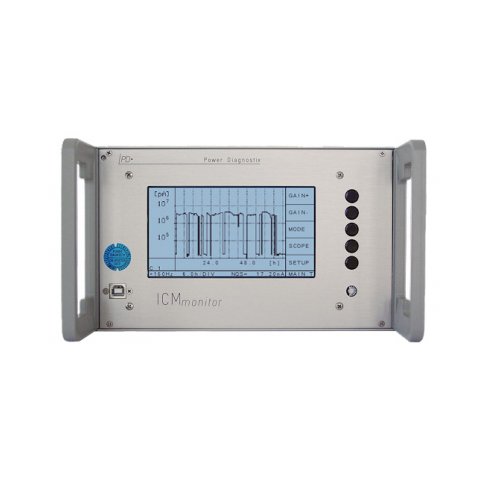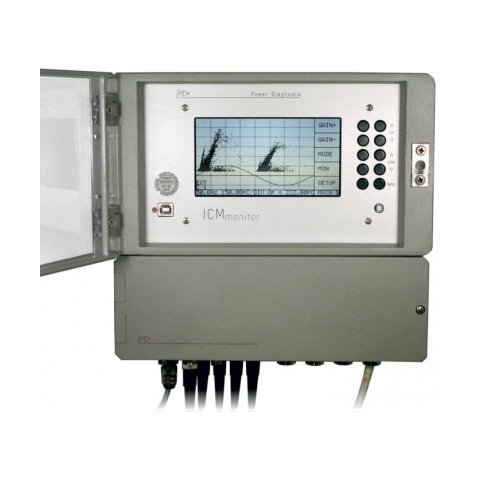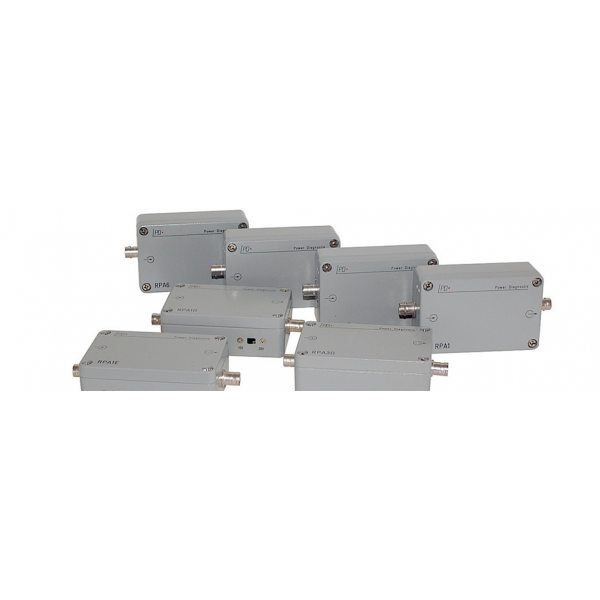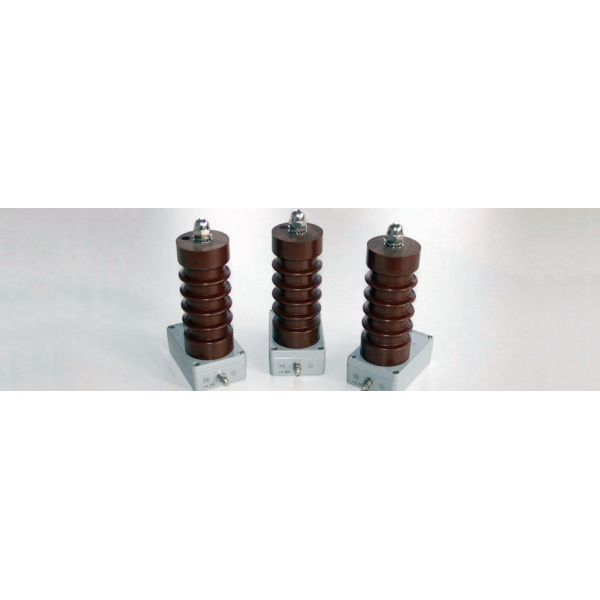ICMmonitor is an instrument for continuous online monitoring of partial discharge activity in high voltage equipment. The instrument tracks key changes in discharge quantities for storage in trend diagrams and for triggering user-settable alarms.
ICMmonitor is part of the ICMseries digital partial discharge measurement systems from Power Diagnostix. ICMmonitor is a compact, autonomous instrument for evaluating the state of medium and high voltage insulation. It integrates a spectrum analyser, an acoustic detector and a conventional partial discharge monitor in one instrument. It is mainly used for continuous and permanent monitoring of rotating machinery, cable systems, power transformers and Gas-Insulated Switch Gears (GIS).
Partial Discharges (PD) measurements are a proven method for effective, non-destructive evaluation of electrical insulation. By detecting insulation problems before they can cause failure, it avoids costly and unexpected service interruptions. ICMmonitor from Power Dyagnostix is a non-invasive digital partial discharge detector that continuously monitors medium and high voltage insulation.
Embedded Display
The ICMmonitor has an easy-to-use push-button interface to navigate on-screen menus displayed on an embedded LCD panel. The LCD modes include a monochrome phase-resolved PD pattern display for classification of defects, a scope-like display showing charge pulses as a vertical line at the phase angle where they occur, a time trending display, and a monitoring display showing bar graphs of two key partial discharge quantities (Qp and NQS). Qp is the apparent charge value of the PD activity, and NQS is the absolute discharge current obtained by integrating the discharge values (summing up the total charge moved and dividing by the time interval, Q/t = [As]/[s]).
Noise Rejection
The ICMmonitor features various noise handling techniques. For example, the noise gating module can be connected to an antenna or a current transformer to sense and remove noise without losing significant PD data. Another method available is simple windowing that suppresses phase-stable pulses occurring in the defined windows. Additionally, appropriate external preamplifiers can limit PD acquisition to a frequency band with less background noise.
Allarmi e grafici di tendenza
Users can set alarm levels of NQS or Qp that will trigger when those values are exceeded. A triggered alarm will appear on the LC display and activate an output relay of the ICMmonitor that can be used to drive a local alarm system. The ICMmonitor also collects and displays PD data over a specified time interval for easy trending and observations of changes in the Qp and NQS levels in the monitored system. Optionally, up to eight DC signals such as temperature or load can be added to this trending.
Telemonitoring
Although ICMmonitor is a stand-alone unit, it can be connected to download data or implement remote control of the unit itself. With its built-in TCP/IP interface or an analog modem, the instrument can be controlled and observed remotely over a telephone or Internet connection anywhere in the world. Optionally, if a monitored system exceeds an alarm level set by the user, the ICMmonitor can place a call to a user-selected number. The ICMmonitor software automatically maintains trend information and frequency-resolved patterns of a variety of physical quantities monitored by the device.
Observing the frequency spectrum of a harshly disturbed PD signal allows the selection of frequency bands with fewer disturbances. Using this center frequency for a PD acquisition gives a vastly improved signal-to-noise ratio resulting in a clear pattern acquisition. The spectrum analyser and PD detector combination within one instrument greatly expands the measurement possibilities when analysing the insulation systems in a noisy environment.
The ICMmonitor with spectrum analysis comes with a four- or eight-channel multiplexer to select the input signal directly. The instrument provides five different display modes and a variety of connectivity options, including TCP/IP or modem for remote control and diagnosis.
SPEC Mode
SPEC mode displays the frequency spectrum of the input signal up to 10 MHz. Three tracks for the current input channel allow this spectrum to be stored, compared and processed. The bandwidth of the demodulated signal can be set to 9 kHz or 270 kHz, respectively.
SCOPE Mode
The SCOPE mode displays the PD pattern concerning the phase known from the ICM series. In this mode, the SPEC mode's selected centre frequency and bandwidth are used to ignore the frequency ranges occupied by noise. The SCOPE mode allows the display of an oscilloscope display (below) and a pattern.
MON Mode
The monitoring display allows you to set NQS or Qp alarm levels activated when these values are exceeded.
TIME Mode
In addition, the SPECmonitor collects and displays PD data over a specific time interval to facilitate the trending and observation of changes in the Qp and NQS levels of the monitored system.
Software
In addition to these autonomous functions, the instrument can be connected to a computer via a serial interface, modem or TCP/IP. Special software allows remote control of the instrument and downloading of stored data. An auto-scan function detects the trending information and the phase resolution pattern of one or more units.
Accessories
Connecting acoustic sensors (AS), UHF sensors, or the standard coupling unit from the test bush to the ICM monitor is possible.
Various preamplifiers such as RPA1F, RPA1L or FCU2 can be used in case of weak signals or to drive long cables.




